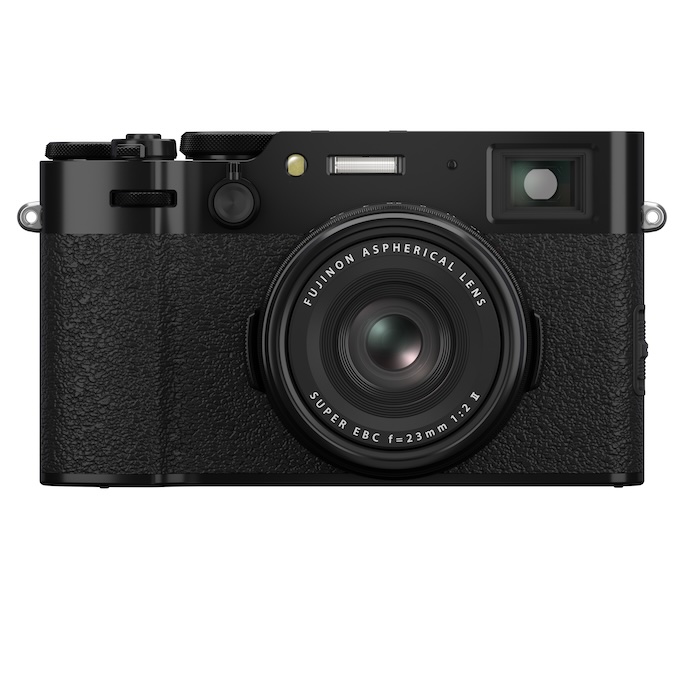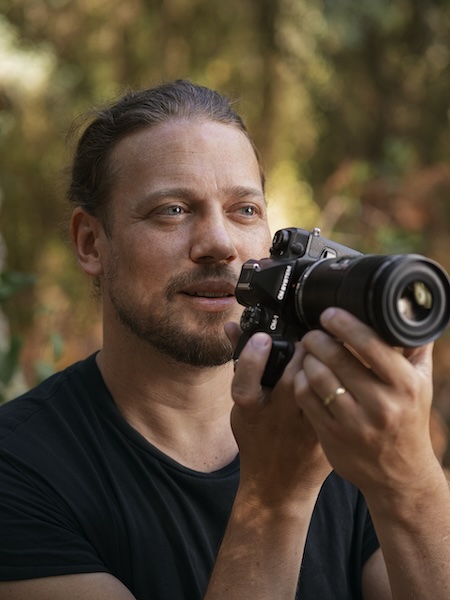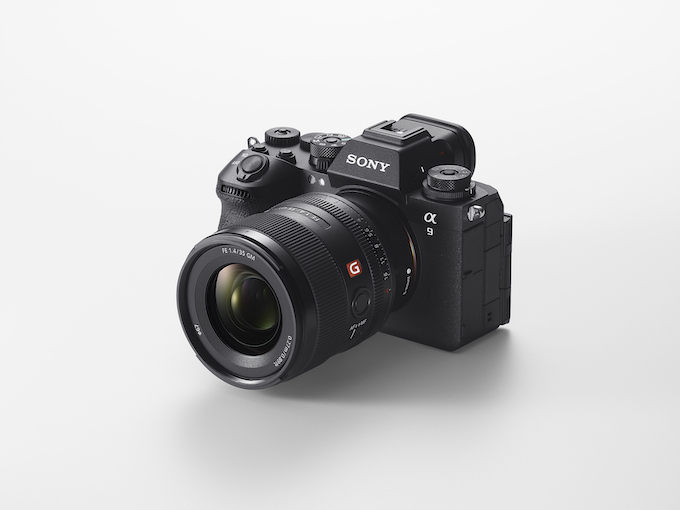Cameras
Rangefinder is a member of the Technical Image Press Association (TIPA), which has contracted with Image Engineering for detailed lab tests of cameras. Recently, they put the Fujifilm GFX50S II under its proverbial microscope and we’ve distilled the results.
Fujifilm has pushed the boundaries of medium-format photography and with the GFX50S II, they’ve set a new price benchmark. At $3,999 (for the body only), it’s the least expensive in the Fujifilm lineup and undercuts rival Hasselblad’s X1D II 50C by a considerable margin.



While it breaks new pricing grounds, the GFX50S II follows in the footsteps of previous Fujifilm medium-format cameras. It borrows the high-res electronic viewfinder and 3.2-inch tilting rear touchscreen of the GFX100S. The camera also employs the advanced autofocus algorithms initially launched with the GFX100S. It supports both face- and eye-detect autofocusing and can focus in low light down to -3.5 EV.
[Read: Fujifilm GFX 100 S Test Results: A Medium-Format Marvel]
The GFX50S II features a 51-megapixel image sensor, like the GFX50S. Unlike prior cameras, however, the GFX50S II offers in-camera image stabilization that’s good for 6.5 stops of shake reduction, per CIPA standards. The moving sensor also supports a pixel-shift mode that lets you snap an image with the equivalent of 205–megapixels—which should be plenty for the pixel peepers.
Speaking of pixels, the sensor’s micro lenses are small enough to preserve space between pixels and better direct light toward the photoreceptors. The end result of such engineering, according to Fujifilm, is enhanced detail and clarity.
You’ll find 19 of Fujifilm’s film simulation modes, plus a built-in interval timer, Bluetooth and full HD video recording.
6 Takeaways from lab tests on the Fujifilm GFX50S II:
- Strong resolving power
- An excellent job of keeping visual noise low
- Decent dynamic range and exceptional color reproduction
- Its video features support full HD recording at several frame rates.
- Quick startup times
- Responsive Autofocus
The GFX50S II’s Strong Resolving Power
The GFX50S II can resolve 98 percent of its sensor’s theoretical maximum resolution at ISO 100 and ISO 400—that’s better than the GFX100S (95 percent) but not quite as good as the Hasselblad X1D II 50c (101 percent). Resolving power dips slightly to 94 percent at ISO 800, still topping the GFX100S and the X1D II 50c (both 92 percent). By ISO 3200, the GFX50S II performs identically to the GFX100S, resolving 90 percent of its sensor’s theoretical maximum.
Image Engineering found that GFX50S II applies milder sharpening than the GFX100S. It also applies more sharpening than the X1D II 50c, which applies little to none at most ISO levels.
[Read: The Fujifilm X100V Camera]
Not Very Noisy
The camera does an excellent job keeping visual noise at bay at the lowest ISOs when viewing its output at 100 percent enlargement on a digital display. Noise will become visible in this viewing condition by ISO 800 and progressively more so as you ramp up the ISO values—comparable to the performance of the Hasselblad X1D II 50c in this viewing condition.

Switch to viewing the GFX50S II’s images as a postcard- sized print or a large print, and noise won’t be visible at just about any ISO level—a very good result. The only exception is some barely visible noise when viewing an image shot at ISO 12,800 on a large print. This is modestly better than what Image Engineering found in the X1D II 50c, which starts to show visible noise in a postcard-sized and large print by ISO 6400.
Decent Dynamic Range and Exceptional Color
At ISO 100 to 800, Image Engineering found that the Fujifilm GFX50S II delivers between 9.6 and 9.8 stops of dynamic range. It’s a good performance, though barely besting the X1D II 50c’s 9.7 stops.
At ISO 1600, the dynamic range of the GFX50S II dips slightly to 9.1 stops, better than the GFX10S (8.9 stops). By the time you hit ISO 6400, dynamic range slips to 7.7 stops.
When it comes to color reproduction, the GFX50S II delivers the goods. Only one color deviated strongly from the target color. Hasselblad’s X1D II 50c was also excellent in the color department, but nonetheless had three colors land off-target in lab tests.
As for the automatic white balance, the Fujifilm GFX50S II was deemed to perform “fairly well,” particularly at the middle of the tested ISO range. By comparison, automatic white balancing on the Hasselblad was “excellent.”

Fujifilm’s GFX50S II is a Medium-Format Movie Maker
While video features aren’t typically top-of-mind for medium-format buyers, the GFX50S II does support full HD recording at several frame rates. Isolating a still frame from a full HD video, Image Engineering found the resolving power was excellent, capturing 100 percent of the sensor’s theoretical maximum resolution at ISO 200 and 98 percent at ISO 1600.
The camera will apply strong sharpening along high-contrast edges during video recording and a moderate amount along low-contrast edges. Noise control is excellent, with no visible noise in a still frame extracted from video at any ISO level and in any viewing condition.
Dynamic range registers at an impressive 10.5 stops at low ISO and color reproduction performance is as good during filming as it is in still photo mode. The good news stops at white balancing, however. Image Engineering notes that white balancing during video was “surprisingly poor.” (There was no evaluation of the Hasselblad X1D II 50c’s video capabilities, so it can’t be compared here, but a firmware release did give the X1D II 50c the ability to record higher-resolution, 2.7K video.)
Snappier Startup Times
Medium-format cameras aren’t known for blazing speed, but it appears Fujifilm was able to deliver a reasonably quick startup time on the GFX50S II. At under a second, it’s considerably faster than the GFX100S (1.8 seconds) and positively supersonic next to the X1D II 50c’s 7.4 second startup time.
Using its mechanical shutter, the GFX50S II chugs along at 2.9 frames per second (fps) for the highest quality JPEGs until the card is full. It’s only a bit speedier than the Hasselblad (2.6 fps) but has significantly more buffer—the X1D II 50c only bursts for 28 frames.
Switch to RAW files and the GFX50S II stops bursting after only eight frames—fewer than the 13 RAW frames that the Hasselblad is capable of recording during burst mode.
While the GFX50S II has half the resolution of the GFX100S, it’s nonetheless slower in continuous shooting, with the GFX100S capable of 5.3 fps for JPEGs. The GFX50S II gets even slower when using the electronic shutter: you can burst at 1.6 fps in JPEG until the card is full or for up to 12 RAW photos.
Responsive Autofocus
It takes a total of a half a second to lock focus and take a photo, of which autofocusing was a third of a second. Interestingly, the performance doesn’t vary when tested in either bright (300lx) or lower light (30lx). This is slower than the GFX100S, which locked autofocus in a fifth of a second at 300lx, but faster than the X1D II 50c, which takes a full second to lock focus and snap a photo.
Price: $3,999 (body)
Dig into more TIPA’s lab test results on the cameras you love here.





